22 Things You Might Not Know About the Stanley Cup
The Florida Panthers and Edmonton Oilers will face off in the 2024 Stanley Cup Playoffs, beginning on June 8, 2024 at 8 p.m. EST.

Of all the major sports trophies, none can compare to the storied history and quirkiness of the Stanley Cup. Here are some interesting facts and crazy stories about the iconic trophy—which is older than the National Hockey League.
1. The Stanley Cup is named after Frederick Arthur, Lord Stanley of Preston.
Frederick Arthur, Lord Stanley of Preston, was the Governor-General of Canada when he purchased the decorative cup in London for 10 guineas in 1892. Stanley donated the cup to award Canada’s top amateur hockey club after he and his family became infatuated with the sport at Montreal’s 1889 Winter Carnival; it was first awarded to the Montreal Amateur Athletic Association (or MAAA) in 1893.
2. There are actually three Stanley Cups.
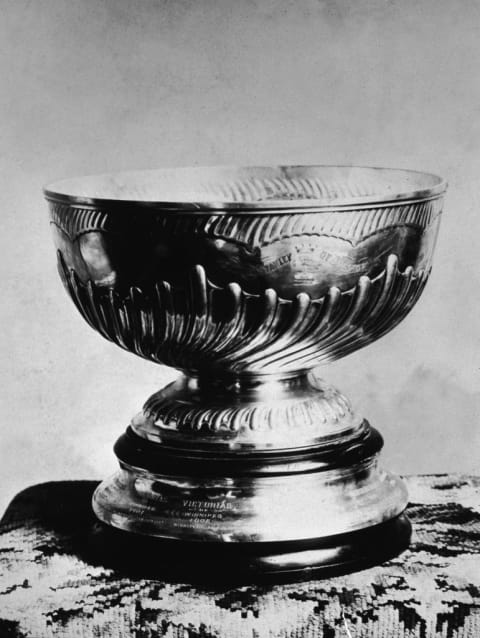
Stanley’s original cup from 1892, known as the Dominion Hockey Challenge Cup (above), was awarded until 1970, and is now on display in the Vault Room at the Hockey Hall of Fame in Toronto.
In 1963, NHL president Clarence Campbell believed that the original cup had become too brittle to give to championship teams, so the Presentation Cup was created and is the well-known trophy awarded today. (Skeptics can authenticate the Presentation Cup by noting the Hockey Hall of Fame seal on the bottom.)
The final cup is a replica of the Presentation Cup, which was created in 1993 by Montreal silversmith Louise St. Jacques and is used as a stand-in at the Hall of Fame when the Presentation Cup isn’t available.
3. It’s one of a kind ...
Unlike other major league sports trophies, a new cup isn’t made every year. Instead, after each championship, the names of the players, coaches, management, and staff of the winning team are added to the cup. The first team to have its roster engraved was the 1906-07 Montreal Wanderers, whose names were etched within the inner bowl of the Dominion Hockey Challenge Cup. The only other team names engraved on the inner bowl are the 1914-15 Vancouver Millionaires.
4. ... And it’s always changing.
More and more teams wanted to be immortalized, so the decision was made to put a separate single ring below the original cup that each new winning roster could be etched on it. Between 1927 and 1947, a new, more streamlined and vertical incarnation of the cup was used. Thanks to its cylindrical shape, it was nicknamed the Stovepipe Cup—but by 1948, the trophy had become too tall to hold or put on display, so the shape was changed to the tiered version used today.
5. The Stanley Cup’s rings are detachable.
Since 1958, five bands of championship names are engraved around the base of the cup. When the rings become full, the oldest band is removed and preserved in Lord Stanley’s Vault at the Great Esso Hall in the Hockey Hall of Fame. A blank replacement band is then put in its place to be filled with the names of the next champions. If all of the rings in the archive were added to the current Stanley Cup, it would be 6.25 feet tall (which is still not as tall as Zdeno Chara).
6. The NHL has official engravers put each name on the cup.
There have been only four official engravers sanctioned by the NHL. The first was the 1948 Stanley Cup designer Carl Poul Petersen, a Danish engraver who moved to Montreal in 1929 and worked with his sons Arno, Ole, and John Paule in his engraving shop until his death in 1977. The current engraver is Louise St. Jacques (creator of the replica of the Presentation Cup), who took over from the second and third official engravers, Doug Boffey and his father Eric, at their shop Boffey Silversmiths in Montreal in 1989.
To inscribe each name individually, St. Jacques disassembles the cup from the top down, and then clamps the band being engraved in a homemade circular jig. She uses special small hammers and a series of letter stamps to strike each letter into the silver while using a metal level to keep the names as straight as possible. St. Jacques estimates that each name takes approximately a half-hour to inscribe and that it takes a non-continuous—not to mention patient—10 hours to complete every name for the winning team.
7. But they’re not always perfect.
Many champion player and team names are misspelled on the Stanley Cup. The name of the 1980-81 New York Islanders is misspelled as “Ilanders,” and the 1971-72 Boston Bruins’ name is misspelled as “Bqstqn Bruins.” Most of the errors are left as they are—it would be too costly to fix the mistakes. But fans believe the errors add to the idiosyncratic nature of the cup.
Corrections have been made, though: When 1996 champion Colorado Avalanche’s Adam Deadmarsh’s name was spelled “Deadmarch” on the Cup, it was stamped out and corrected after he publicly stated how heartbroken he was about the error.
8. Sometimes the winning teams don’t play by the rules.
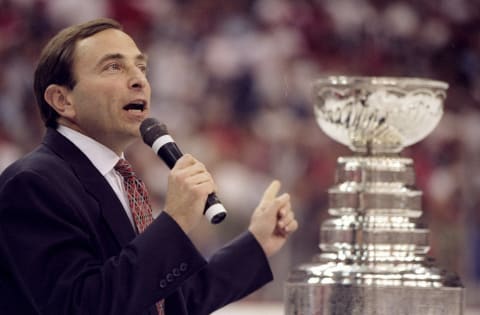
The NHL will allow no more than 52 names from each year’s winning team to be engraved, with the assumption that the people included are affiliated with or have played on that club during the Stanley Cup finals.
But Peter Pocklington—the former Edmonton Oilers owner perhaps best known for trading away The Great One himself, Wayne Gretzky—included his father, Basil, on the list of names to go along with the 1983-84 champion Oilers, despite the fact that his father wasn’t officially affiliated with the team. The league had the engraver strike out Basil’s name with a series of capital Xs.
9. There can be extenuating circumstances.
When the Detroit Red Wings won the Stanley Cup in 1998, the team asked that Vladimir Konstantinov’s name be engraved on the cup, even though he didn’t play that year. The NHL allowed it because Konstantinov was a team member who was seriously injured in a car accident before the Wings defended their title.
There are also a couple of instances where no names were inscribed at all, like when the cup wasn’t awarded in 1919 due to the influenza pandemic. It also wasn’t awarded for the 2004-05 season because of a lockout between the league and the players union. The entire space for the players’ names reads “SEASON NOT PLAYED.”
10. Some people make multiple appearances on the Stanley Cup.

Henri Richard, brother of Montreal Canadiens legend Maurice “Rocket” Richard and a hockey great in his own right, is on the cup a record 11 times as a player, while Scotty Bowman appears on the cup the most for a coach with nine Stanley Cup wins as the skipper for the Red Wings, Penguins, and Canadiens.
With 23 victories, the Canadiens have taken home the Stanley Cup more than any other team—though their last win, unfortunately for Habs fans, was back in 1993. Montreal also holds the record for most consecutive cup wins with five in a row from 1956 to 1960.
11. One fan tried to steal the cup—but not for the reason you’d expect.
Montreal fans are so possessive of the cup that during the 1962 playoffs, when the cup was on display at Chicago Stadium for the defending champion Black Hawks (the name was compressed to Blackhawks in 1986), Habs fan Ken Kilander attempted to take the cup and walk right out the door with it. When a police officer caught and questioned him, Kilander responded, “I want to take it back where it belongs—to Montreal.”
12. The Stanley Cup isn’t only for men.
Seventeen women have their names inscribed on the cup. The first was Marguerite Norris, who was the president of the Detroit Red Wings for their 1954-55 season victory. Sonia Scurfield is the only Canadian woman to have her name inscribed; she was the co-owner of the 1988-89 champion Calgary Flames.
13. Some people are superstitious about it.
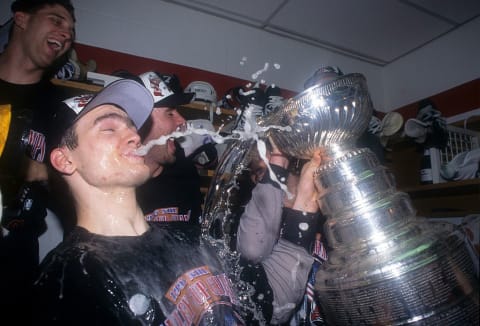
Various players are wary of the cup if they haven’t won it yet, and steer clear if they’re still in contention—in fact, some players on conference champion teams won’t even touch the respective Western Conference Campbell Bowl or Eastern Conference Prince of Wales Trophy so they don’t jinx their team’s chances at the real prize.
14. The Stanley Cup has a chaperone.
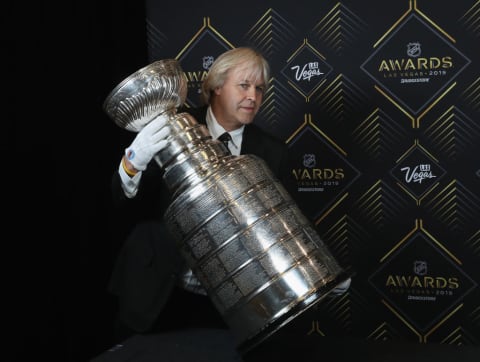
The Stanley Cup is always accompanied by at least one representative of the Hockey Hall of Fame, dubbed the Keeper of the Cup. The current keeper, Philip Pritchard, has held the position since 1991 and even maintains a Twitter account to update followers on where the cup goes from day to day. In 2024, the Cup will also go on the road with Miragh Bitove, who made history when she was named the first woman Cup keeper in April.
Way back when the cup was donated, Lord Stanley mandated that two trustees must always be appointed to care for the Cup and ensure it was kept in proper condition. The two current trustees are Lanny McDonald and Gary Meagher.
15. The cup belongs to the players … for one day.
The NHL allows each championship team 100 off-season days with the cup (accompanied by the keeper, of course) to do with it as they wish. It was the 1994-95 New Jersey Devils who formalized the tradition of giving each player one personal day with the cup during the off-season. In fact, since the 2003 season, the Hall of Fame has been keeping journals of the cup’s travels with each winning team. Though some players use their day with the trophy for peaceful reflection, others have gone a bit wild with Lord Stanley’s Cup.
16. The Stanley Cup has gone swimming at least three times.

Following their 1991 victory over the Minnesota North Stars, Pittsburgh Penguins legend Mario Lemieux hosted the team at his house. When Lemieux wasn’t looking, Penguins winger Phil Bourque decided he wanted to see if the cup could float—and threw the trophy into the captain’s in-ground pool. It didn’t float, and immediately sank to the bottom.
Two years later the cup also found the bottom of Montreal Canadiens goaltender Patrick Roy’s pool. But in 2002, when Red Wings goaltender Dominik Hašek attempted to swim with the cup, the keeper had had enough: He demanded Hašek dry off the trophy and give it back, thus cutting short his allotted personal day.
17. The Stanley Cup once spent all night in an Ottawa canal.
When the Ottawa Hockey Club, now known as the Ottawa Senators, won the cup in 1905, the members of the “Silver Seven” had a little too much fun celebrating their victory. After the team banquet, some not-so-sober players brought the trophy outside and allegedly decided to test their accuracy by trying to kick the then-small Cup into Ottawa’s Rideau Canal.
Once successful, they went on their drunken way and forgot all about it—until their teammates realized the next day that the trophy was missing. The Stanley Cup was retrieved and given to a player named Harry Smith, the most responsible man on the team, for safekeeping.
18. The Montreal Canadiens won the Stanley Cup in 1924, and then forgot it on the side of a road.
When the members of the 1924 champion Canadiens got a flat tire on the way to the team’s victory banquet at owner Leo Dandurand’s house, they had to remove the cup from the trunk of the car to get to the spare tire. The players, eager to celebrate their win, quickly changed the tire and made their way to the party. When the traditional time came for each player to drink champagne from the silver bowl, the cup was nowhere to be found. The players had left it on the side of the road. They hopped in their car and sped back to the place where they had changed the flat and found the cup in a snow bank—right where they had left it.
But that wasn’t the first time a Montreal hockey team had forgotten the cup. The 1907 Montreal Wanderers left it at the home of a team photographer; the photographer’s mother used the cup as a flower pot until the team came back to retrieve it.
19. Kids have been baptized in the Stanley Cup.
After the Colorado Avalanche won the 1995-96 championship, defenseman Sylvain Lefebvre used his personal day with the cup to have his daughter christened in the top bowl.
Eleven years later, after the Detroit Red Wings won in 2007-08, Swedish left-winger Tomas Holmström brought the silverware back to his native country so that his cousin could baptize his 7-week-old daughter in the trophy. In 2017, Pittsburgh Penguins forward John Archibald gave his infant son the same treatment. And in 2022, Avalanche defenseman Jack Johnson had his three kids baptized in the cup: “His three kids’ baptism was planned before the playoffs, and it turned out the date was Johnson’s day with the Cup,” The Athletic writer Peter Baugh tweeted. “So the kids got baptized in the Cup itself.”
20. It has reportedly seen its fair share of vice.
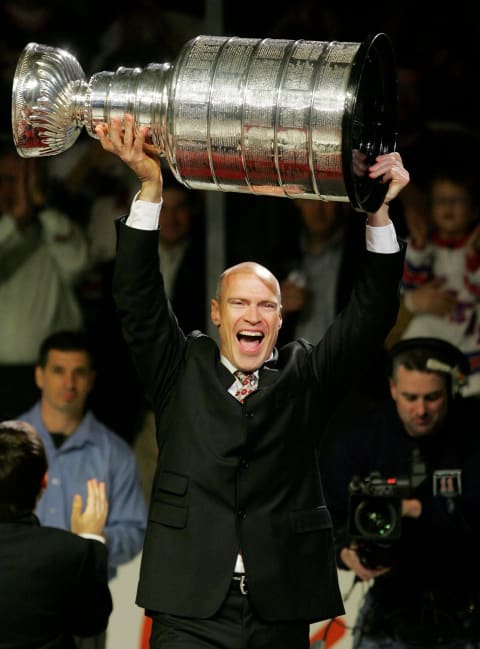
The Edmonton Oilers were a force to be reckoned with in the 1980s. Between 1984 and 1990, the team won five Stanley Cups and were led by two hockey greats, Wayne Gretzky and Mark Messier (above). Legend has it that after their 1986-87 win, Messier brought the cup to an Edmonton strip club called the Forum Inn and set the trophy on the main stage. One of the dancers at the club then reportedly incorporated the cup into her risqué routine.
When he won the cup again in 1994 with the New York Rangers, Messier and his teammates brought the trophy to another strip club—Scores in Manhattan.
21. It might hold a curse.
When Messier and the Rangers won in 1994, it ended a record 54-year championship drought for the Broadway Blueshirts (the team hadn’t won since the 1939-40 season). Fans believe that the curse might have been brought on because the Rangers disrespected the cup.
During the 1939-40 season, the mortgage on the Rangers’ home rink—at the time the third incarnation of Madison Square Garden—was finally paid off. To celebrate, the management of the team symbolically burned the mortgage documents in the bowl of the Stanley Cup. Then, left-winger Lynn Patrick and his teammates allegedly urinated in the cup’s bowl to celebrate their victory. The Rangers finally took home the trophy again in 1994, but they haven’t won hockey’s ultimate prize since.
22. The Stanley Cup went to war.
It’s been all over the world, from Russia to the Czech Republic to Sweden, but in 2007, the Stanley Cup went to war. To boost morale for Canadian and American troops serving in the Middle East, the cup was flown into an active war zone at Camp Nathan Smith in Kandahar, Afghanistan, for a meet and greet. Canadians love nothing more than hockey, and you can read up on the reactions from the troops on the Hall of Fame’s Stanley Cup Journal when it went to Afghanistan here.
Read More Articles About Hockey:
manual
This article was originally published in 2017; it has been updated for 2024.